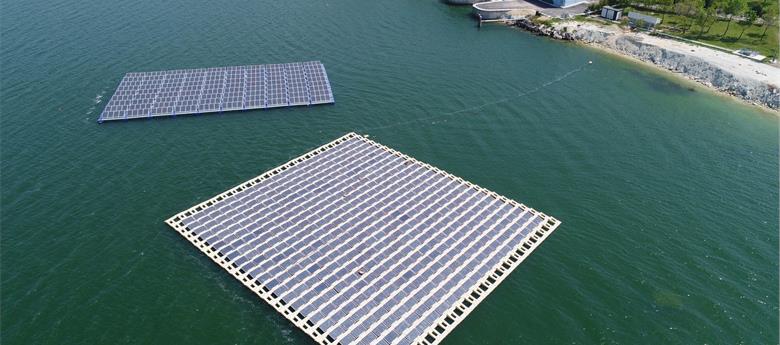The government of Odisha plans to develop around 500 MW of floating solar power plants on various reservoirs in the state in collaboration with National Hydroelectric Power Corporation, shared power minister R.K. Singh in Parliament recently.
Notably, Odisha has the potential of generating 17,755 MW of electricity from floating solar over 877 sq.km of water surface area in its reservoirs, according to a report by sustainability thinktank The Energy and Resources Institute (TERI).
The state, which has installed 521.69 MW of renewable energy capacity (including 397.84 MW from solar) as on February 29, also plans to develop around 358 MW of ground mounted capacity under different projects—the minister added.
The proposed ground-mounted projects include 275 MW Solar Park in Sambalpur and Boudh districts through Green Energy Development Corporation of Odisha Limited (GEDCOL), 8 MW on surplus lands available in Baripada, Jayanagar and New Bolangir EHV sub-stations of Odisha Power Transmission Corporation Limited and Mukhiguda & Manmunda power house of Odisha Hydro Power Corporation and GEDCOL, and cumulative capacity of 75 MW at Boudh, Bargarh and Balangir districts (each 25 MW capacity).
Further, the Odisha government plans to set up 19 MW of grid-connected rooftop solar projects on government buildings in 17 cities of the state through GEDCOL.
Overall India potential
TERI’s report has calculated India’s water reservoirs have 18,000 sq. km of area with the potential to host 280 GW of floating solar power generation capacity.
The report calculated the floating solar potential on the basis of 30% of the water surface area of the country’s medium and large reservoirs.
The report provides state-wise floating solar potential in the form of a web-based interactive tool called India Floating Solar PV-Tool, which has also been developed under this study.
According to the tool, the greatest potential lies in Maharashtra, where 57,891 MW of electricity can be generated from floating solar over 3173 sq. km of water surface area in reservoirs.
This content is protected by copyright and may not be reused. If you want to cooperate with us and would like to reuse some of our content, please contact: editors@pv-magazine.com.









4 comments
By submitting this form you agree to pv magazine using your data for the purposes of publishing your comment.
Your personal data will only be disclosed or otherwise transmitted to third parties for the purposes of spam filtering or if this is necessary for technical maintenance of the website. Any other transfer to third parties will not take place unless this is justified on the basis of applicable data protection regulations or if pv magazine is legally obliged to do so.
You may revoke this consent at any time with effect for the future, in which case your personal data will be deleted immediately. Otherwise, your data will be deleted if pv magazine has processed your request or the purpose of data storage is fulfilled.
Further information on data privacy can be found in our Data Protection Policy.